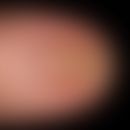Synonym(s)
DefinitionThis section has been translated automatically.
Chrysarobin is a drug that is present as a microcrystalline, odourless, tasteless powder. Chemically, chrysarobine is a mixture of various anthraquinones (e.g. methyl trioxyanthracene) and exists as a glucoside in the plant. In extracts, however, it is gradually oxidized to chrysophanic acid (a dioxymethylanthraquinone) and glucose. This product takes on a deep red colour in alkaline environments. Chrysarobin is almost insoluble in water and slightly soluble in alcohol. Both internally and externally, chrysarobin acts as a strong irritant.
Field of application/useThis section has been translated automatically.
The starting substance of chrysarobin is Goa powder (Goa is derived from the Portuguese colony of Goa, from which it was first introduced around 1852). This is extracted from the strain of Andira Araroba. The 30-40m high Andira Araroba tree belongs to the legumes and is abundant in forests in the province of Bahia (Brazil). The tree usually prefers low and humid places. It has large, unpaired, elongated leaves. The flowers are purple and arranged in panicles. The Goa powder is contained in the trunk and fills the gaps in the heartwood.
Dermatologically it is used in various applications. Dermatologically, the oxidation product chrysophanic acid is still used in various countries. It is applied externally for psoriasis and chronic eczema. Chrysophanic acid, just like chrysarobin, colours the skin and linen fabrics dark yellow or brown-violet, a colouring which is hardly washable.
Chrysarobin itself was used for many years as a local antipsoriatic agent in the form of ointments (0.25-20% -Polano 1952) and brushes (e.g. Unguentum Chrysarobini). The Dreuw's ointment with chrysarobin, salicylic acid, birch wood tar and soap became famous. Chrysarobin was also used as an antimycotic. Polano mentions a spirit which is based on the Arning`sche tincture.
You might also be interested in
IndicationThis section has been translated automatically.
Dosage and method of useThis section has been translated automatically.
Standard concentrationThis section has been translated automatically.
0.5% - 2% in ointments and creams. The treatments were carried out with gradual concentrations.
Undesirable effectsThis section has been translated automatically.
Note(s)This section has been translated automatically.
Chrysarobin was first introduced into practice in 1878 by Balmanno Squire (Kaposi M 1883). Chrysarobin applications are no longer common today. Ready-to-use preparations with the active agent are no longer commercially available.
A synthetic anthranol is the cignolin (1,8-dioxyanthranol) originally produced by Bayer and still used today. In the USA it is called anthralin in the UK dithranol.
LiteratureThis section has been translated automatically.
- v. Bruchhausen et al. (1993) In: Hager`s Handbuch. Chrysarobin, substances A-D. S 937
- Kaposi M (1883) Skin diseases. UrbanSchwarzenberg p 403
- Polano MK (1952) Skin Therapeutics. Elsevier Publishing Company, Amsterdam, Houston p 120-123




